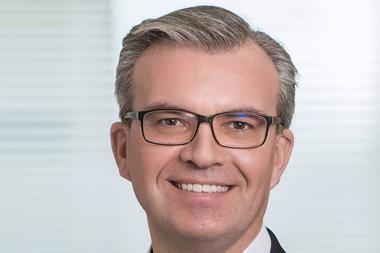A consortium led by Deutsche Pensionsfonds and PB Pensionsfonds, formed to deliver the first social partner pensions model, is looking at further growth via equity investing to generate returns, considering the global economic recovery.
“Due to this positive outlook for capital markets, we see further growth potential in particular in equity investments,” Fabian von Löbbecke, chief executive officer of HDI Pensionsmanagement and board member of HDI Lebensversicherung, part of insurer Talanx, told IPE.
Von Löbbecke is also member of the management board for PB Pensionsfonds, a subsidiary of HDI Deutschland Bancassurance.
The prospect for returns on corporate bonds also remains positive based on an optimistic view for capital markets. Yields on government bonds can continue to rise in the wake of a positive economic situation, higher inflation expectations and reduced support from central banks, while in return bond prices would fall, he said.
“We consider government bonds appropriate for diversification and [to achieve] higher yields in the medium term,” von Löbbecke added.
Under the brand “Die Deutsche Betriebsrente” (DDBR), insurers Zurich and Talanx have jointly built a model to offer a solution for social partner pensions, or Sozialpartnermodell, a form of occupational pension.
Talanx agreed with union Ver.di on the first social partner pension model that is scheduled to take effect on 1 July, subject to approval by the financial supervisory authority BaFin.
The social partner pensions’ capital is to be invested in a special alternative investment fund (Special-AIF).
The Spezialfonds DDBR1 was set up on 3 December 2018 with Talanx and Zurich having each invested €50m to start it up. The contributions flow into the Spezialfonds, too, which is split into two sub-funds.
One sub-fund invests exclusively in foreign equities, while the other invests in foreign bonds, von Löbbecke explained, adding that the two sub-funds should have equal weight.
If the weight shifts as a result of developments in capital markets, a rebalancing process takes place, he added.
“It could make sense in the future with increasing fund volumes to include further asset classes”, for example illiquid asset classes, von Löbbecke said.
The partners have mandated J.P. Morgan Asset Management to manage the bonds sub-fund and DWS for the equity segment.
The decision on how to split up the allocation in asset classes was taken with an eye on the pension plan based on the pure defined contribution (DC) product – or Reine Beitragszusage – and returns expectations in the long term.
“The [pure DC] product, in combination with capital investment, aims to achieve the highest possible return or the highest possible target pension (Zielrente), higher than in ’old company pension [schemes]’,” von Löbbecke said.
Sustainability and security for employees
The allocation of assets in the social partner pension model will aim for maximum returns on defined risks by integrating environmental, social and corporate governance (ESG) into the investment process.
Quantifiable information used to assess risks and potential returns however “does not paint a complete picture” in conventional investment processes, von Löbbecke said.
Therefore an active asset management approach in the bond segment adds elements relating to sustainability to evaluate ESG aspects.
“This requires access to relevant information in the form of ESG analysis, evaluations and data [and] this information is provided by specialised external providers. Information flows at the end into the decisions about buying or selling assets,” he added.
The Pensionsfonds apply an exclusion list including companies not complying with the UN Global Compact with regard to controversial weapons, or that are predominantly active in businesses such as coal, oil, and nuclear energy, or that do not adhere to human right and labour norms.
“It was agreed that Ver.di would be involved in the further development of the ESG criteria for the Spezialfonds,” von Löbbecke said.
The DDBR foresees different mechanisms to reduce fluctuations in the target pension for employees.
The first element to guarantee a degree of security in terms of target pension for employees is a “solid investment policy”, with regular strategic asset allocation reviews, he said.
The second element is the so-called “collective buffer” to “cushion” temporary fluctuations in capital markets and assign an expected interest rate to beneficiaries.
The collective buffer model points to returns that are as reliable as possible. “This often even works when capital markets show a negative performance [while] periods of a positive development in capital markets fill up the collective buffer again, thus protecting against the next phases of fragility,” von Löbbecke added.
A third element of security relates to the choice of a discount rate for pensioners and capital surplus for the transition to the retirement phase.
“[So that] at the beginning of the pension [phase], a higher capital coverage is available than would be required on an arithmetical basis for the pension payment,” he said.
Finally, employer contributions also provide an additional layer of security for employees.









No comments yet